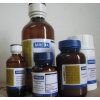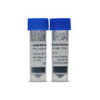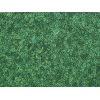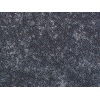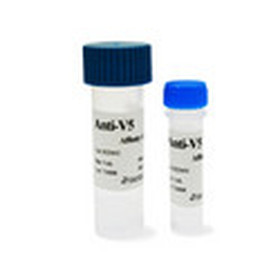
产品详情
巨噬细胞移动抑制因子(MIF)重组蛋白
来源原核表达
宿主E.coli
内毒素水平<1.0EU/μg(LAL法测定)
亚细胞定位n/a
预测分子量13.4kDa
实际分子量-(差异分析请参阅说明书)
片段与标签Met3~Asn111 with N-terminal His Tag
缓冲液成份磷酸盐缓冲液(pH7.4,含有 0.01% SKL, 1mM DTT, 5% Trehalose和Proclin300.)
性状冻干粉
纯度> 95%
等电点-
巨噬细胞移动抑制因子(MIF)重组蛋白应用SDS-PAGE; WB; ELISA; IP.
Recombinant Macrophage Migration Inhibitory Factor (MIF)
Organism Species: Homo sapiens (Human)
Instruction manual
FOR IN VITRO USE AND RESEARCH USE ONLY
NOT FOR USE IN CLINICAL DIAGNOSTIC PROCEDURES
10th Edition (Revised in Jan, 2014)
[ PROPERTIES ]
Residues: Met3~Asn111
Tags: N-terminal His-Tag
Accession: P14174
Host: E. coli
Subcellular Location: Secreted. Cytoplasm. Purity: >95%
Endotoxin Level: <1.0EU per 1μg
(determined by the LAL method).
Formulation: Supplied as lyophilized form in PBS,
pH7.4, containing 1mM DTT, 5% trehalose, 0.05%
sarcosyl and preservative.
Predicted isoelectric point: 7.1
Predicted Molecular Mass: 13.4kDa
Applications: SDS-PAGE; WB; ELISA; IP.
(May be suitable for use in other assays to be determined by the end user.)
巨噬细胞移动抑制因子(MIF)重组蛋白[ USAGE ]
Reconstitute in sterile PBS, pH7.2-pH7.4.
[ STORAGE AND STABILITY ]
Storage: Avoid repeated freeze/thaw cycles.
Store at 2-8oC for one month.
Aliquot and store at -80oC for 12 months.
Stability Test: The thermal stability is described by the loss rate of the target
protein. The loss rate was determined by accelerated thermal degradation test,
that is, incubate the protein at 37oC for 48h, and no obvious degradation and
precipitation were observed. (Referring from China Biological Products Standard,
which was calculated by the Arrhenius equation.) The loss of this protein is less
than 5% within the expiration date under appropriate storage condition.
[ SEQUENCES ]
The sequence of the target protein is listed below.
MFIVNTNV PRASVPDGFL SELTQQLAQA TGKPPQYIAV HVVPDQLMAF GGSSEPCALC
SLHSIGKIGG AQNRSYSKLL CGLLAERLRI SPDRVYINYY DMNAANVGWN N
巨噬细胞移动抑制因子(MIF)重组蛋白[ REFERENCES ]
1. Kleemann R., et al. (2000) Nature 408:211-216.
2. Wistow G.J., et al. (1993) Proc. Natl. Acad. Sci. U.S.A. 90:1272-1275.
3. Gevaert K., et al. (2003) Nat. Biotechnol. 21:566-569.
4. Mikayama T., et al. (1993) Proc. Natl. Acad. Sci. U.S.A. 90:10056-10060.

